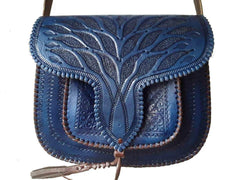Few words about history
The craft activity all over North Africa knew a large degree of progress in the era of the Phoenicians who, mixed with Amazigh, first inhabitants of Morocco, established a strong culture for a long period of time.
In Carthaginian era the life style of Moroccans has dramatically evolved. The commerce occupied most of the economic activity. While Moroccans have been importers of raw materials, they were exporting textiles, glassware and precious metals.
In the Roman era the handicraft has expanded considerably, as numerous industries evolved to to meet the needs of traditional life and associated luxury needs.
After the Islamic conquest, the Maghreb knew a new civilization and culture, featured hand-sophisticated industries, and other money evolved industries, mainly those associated with construction such as carpentry, blacksmithing, inscription on the stone, gypsum, ceramics and glass, and marble industry.
The development of traditional crafts and arts continued, profiting from the urban movement and the rise of professionalism, and reached a stage of prosperity at the time of the Bani Marin. In the era of King Mawla Ahmad al-Mansur al-Saadi judgment (1576 m), he deliberately tried to revitalize the business with residents of the desert by the creation of the so-called industrial villages in the desert for the first time in the history of Morocco.
The arrival in Morocco of Muslims and Jews expelled from Andalusia had a positive impact on traditional industry by the introduction of new arts and concepts.
The moroccan Handicraft has its own traditional markets and neighborhoods. All historic cities have their traditional neighborhoods which take into account the environmental field. It is the case in Fez, Rabat, Oujda, Marrakech, Tetouan, Essaouira, Safi, Salé and all historic cities.
The moroccan Handicraft has moved from a traditional industry purely relying on traditional tools and means, to a professional one that uses sophisticated tools and means while maintaining the inherent characteristic of its traditional character.
Zoom on textile and leather industries
The textile industry is one of the oldest and most traditional crafts in Morocco. It was exercised before the first Amazigh close contact with the Phoenician civilization. Handwoven blankets, covers and carpets are produced in different Moroccan tribes and are considered the basis of home furniture.
On the other branches of the art of weaving the embroidery that matters mainly women's clothes, bedding and home decorating.
Morocco’s fame in the leather industry is incontestable to the extent that when the craft become authentic and noble it bears the name of Morocco (Maroquinerie). The leather in Morocco has a long history of originality and craft and its extension in the history of Morocco.
Moroccan Corridor selects the best of this two industries and make them available for lovers of art and authenticity through our collections that you can explore on Moroccan Corridor website.






























